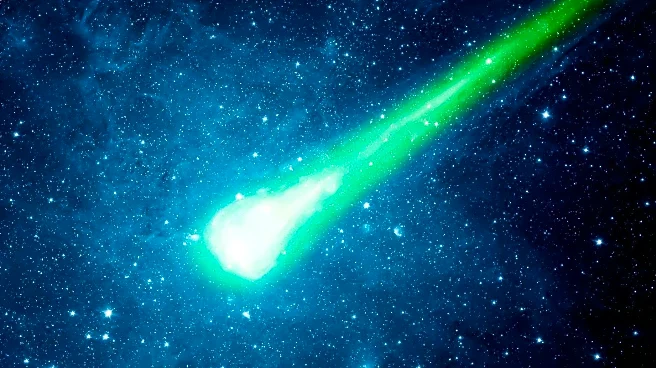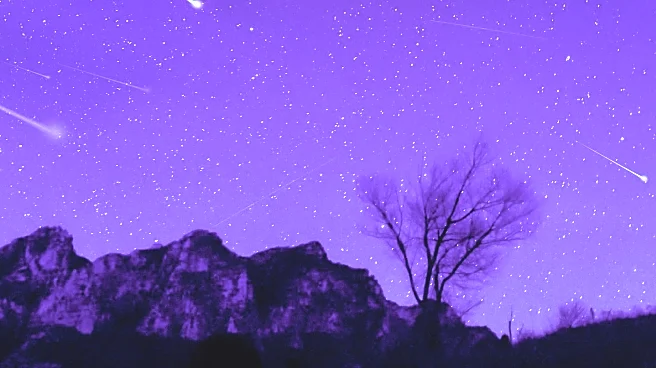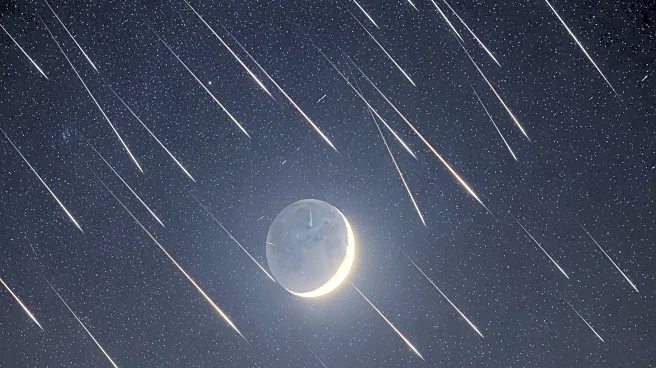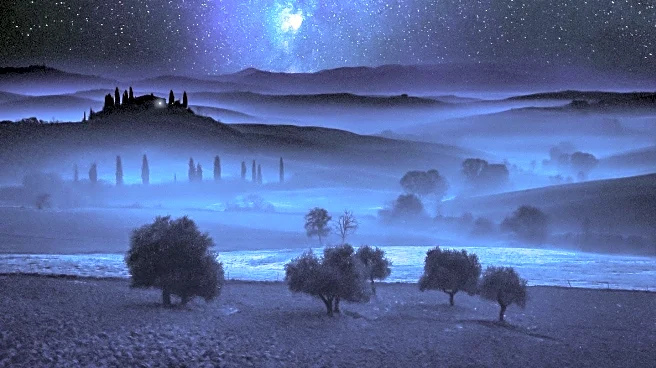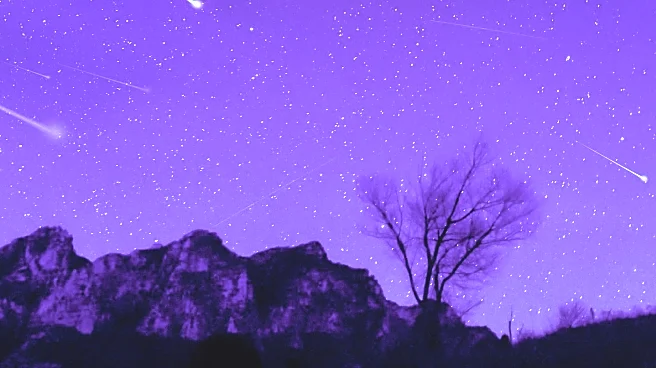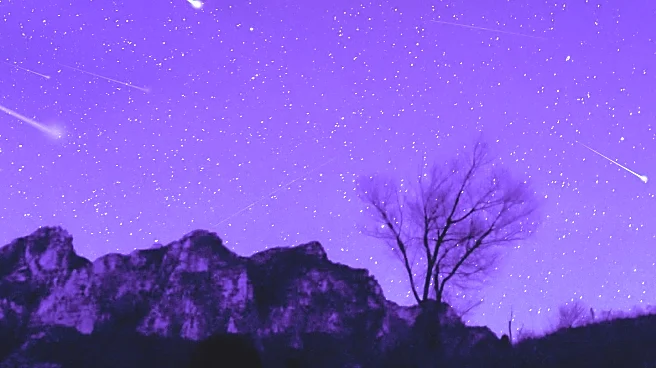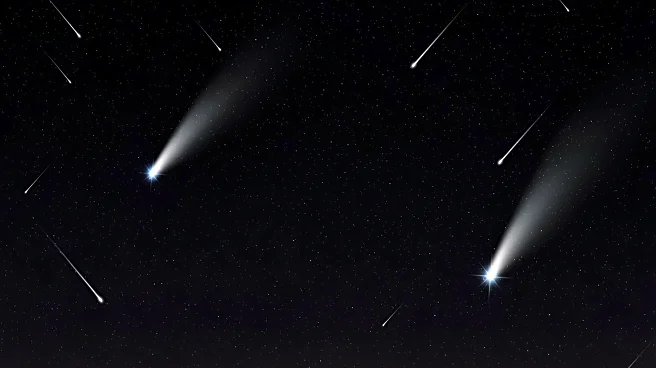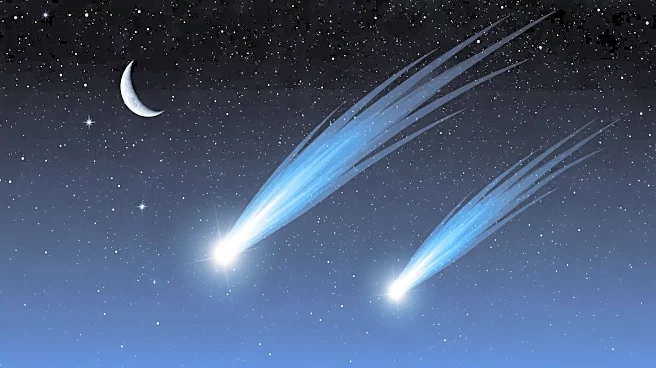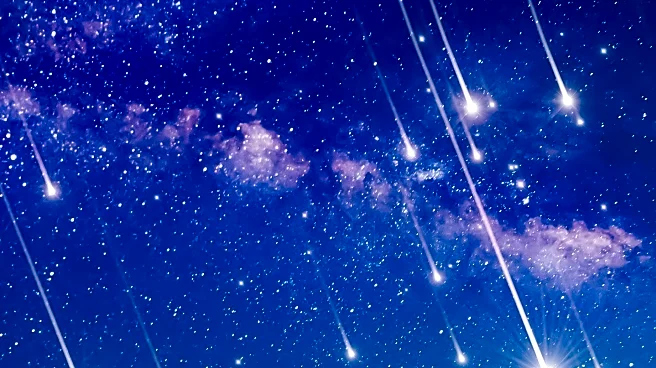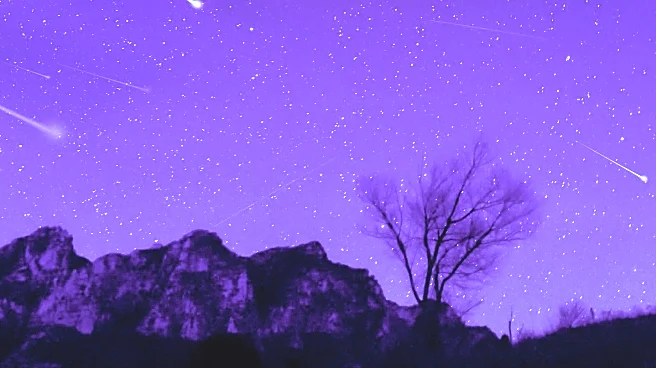What's Happening?
The Orionid meteor shower, an annual celestial event, is set to peak between October 21-23, offering optimal viewing conditions due to a new moon. This meteor shower occurs as Earth passes through debris
left by Halley's Comet. In addition to the meteor shower, two green comets, C/2025 A6 (Lemmon) and C/2025 R2 (SWAN), will be visible in the night sky. Comet Lemmon will be closest to Earth at 56 million miles, while Comet Swan will pass at 24 million miles. Both comets will reach peak brightness between October 20-21 and remain visible through early November. Comet Lemmon can be seen in the western sky after sunset, and Comet Swan is best viewed before dawn. The green glow of these comets is due to diatomic carbon, which emits green light when broken down by solar radiation.
Why It's Important?
This celestial event provides a rare opportunity for astronomy enthusiasts and the general public to witness two comets simultaneously, a phenomenon described as a 'rare cosmic treat.' The visibility of these comets, along with the Orionid meteor shower, enhances public interest in astronomy and encourages outdoor activities under dark skies. Such events can boost local tourism in areas known for clear night skies, potentially benefiting local economies. Additionally, the scientific community gains valuable observational data that can contribute to understanding comet compositions and behaviors.
What's Next?
Astronomer Gianluca Masi will host a special livestream on October 20 to showcase the comets' passage, providing an accessible platform for global audiences to experience the event. As the comets continue their journey, they will gradually fade from view, offering a limited window for observation. The event may inspire further public and scientific interest in upcoming celestial phenomena, fostering educational outreach and community engagement in astronomy.
Beyond the Headlines
The presence of two visible comets at once highlights the dynamic nature of our solar system and the ongoing discoveries in space exploration. The unique green glow of these comets, caused by diatomic carbon, underscores the diverse chemical compositions found in celestial bodies. This event may prompt discussions on the importance of preserving dark skies for astronomical observations, emphasizing the need for policies that mitigate light pollution.
